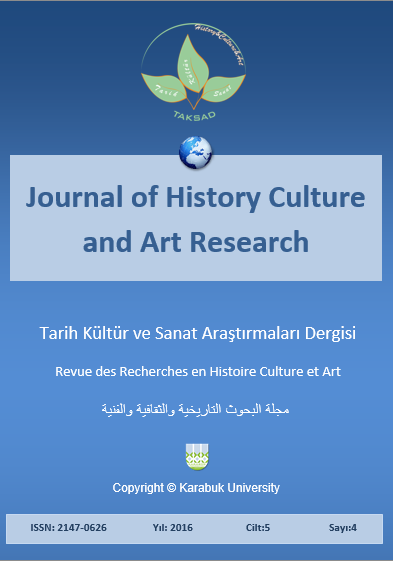Evaluating and Comparing the Educational, Mystical, Epic Tales using Narrative Therapy
DOI:
https://doi.org/10.7596/taksad.v5i4.617Keywords:
Narrative Therapy, Literary Type, Educational, Mystical, Epic, Medical Components.Abstract
Since humankind step into the arena of existence, form of stories, to attract audience and greater impact on them has used. Reader or Hearer of the story, to identify with the hero, the gains experience unquestionably in his attitude to the world and will affect; as far as treatment method called narrative therapy. Stories of classical Persian literature today have the ability to rewrite many simple languages. The stories that exist in different genres can for ethical treatment of disorders, especially in children to be very useful. In this study, Kalīla wa Dimna, Marzubannama and Sindbad-Nameh, educational genres groups, Masnavi and Shaikh Attar's stories that are a subset of lyrical genre, and the stories of Shahnameh, an epic type were chosen. The reason that these texts, unique examples of the types are mentioned. Then a comparison was made between them in terms of the variety of components and their type finally, it was concluded that messages of any genre compared to other genres, their similarities and differences; but the character is in a dominant genre in the first place is important, in other genres, it is not. Education is a significant component in the "decision-making based on reason and logic" in a kind of mystical, "Punishment of action and see the sins" and the epic genre "pattern of providing confidence and courage".
References
Azar, Yazdi, M. (2000). Good Stories for Good People. (Tales of Kalīla wa Dimna). Tehran: Bloom. Institute of Technology Press.
Azar, Yazdi, M. (2000). Good for Children. Good Saga (Saga favorites from Marzban). Tehran: Books bloom. Institute of Technology Press.
Azar, Yazdi, M. (2000). Good stories for Good People. (Tales of Sindbad Nameh). Tehran: Bloom, Institute of Technology Press.
Azar, Yazdi, M. (2000). Good for Children. Good Stories (Choice Tales from Masnavi). Tehran: Books Bloom. Institute of Technology Press.
Azar, Yazdi, M. (2000). Good Stories for Good People. (Tales choice of Sheikh Attar). Tehran: Bloom, Institute of Technology Press.
Azar, Yazdi, M. (2000). Up for Good Stories. (Stories of Shahnameh). Tehran: Bloom, Institute of Technology Press.
Khosronejad, M. (2004). Innocence and Experience. Introduction to Children's Literature Philosophies, Tehran: Publication Center.
Kurdi, A. R. (2012). The Story to Qshdrmany. Shiraz: Green Fadak.
Parirokh, M. (2009). The Story. As a Tool to Help Children and Adolescents Cope with Problems. Check with the Approach of Bibliotherapy Children's Stories. Children's Literature Journal: Issue 47.
Roushan, A. (2012). Storytelling. How the Story to Help Children Overcome the Difficulties of Life Benefit. Translators: B. Yazdani, M. Emadi, Tehran: Buds.
Sahebi, A. (2010). Narrative Therapy (Range of Educational and Medical Analogy), Tehran: Venerable.
Shfii Kodkani, MR. (2011). With Lights and Mirrors. In Search of the Roots of the Evolution of Contemporary Poetry of Iran. Tehran: Spoke.
Maulavi, M. (2004). Masnavi. Correction. Introduction and Discovery Alabyat. Consistency Din. Sale. Tehran: Friends.
Mays, M. (1990). Metaphor in Hypnotherapy and Psychology. Individual Psychology. 46:4. Pp. 423-430.
Mirsadeghi, M. (2009). Glossary Poetry. Poetics and Culture Detailed Terms of Styles and Schools. Fourth Edition. Tehran.
Downloads
Published
How to Cite
Issue
Section
License
All papers licensed under Creative Commons 4.0 CC-BY.- Share — copy and redistribute the material in any medium or format
- Adapt — remix, transform, and build upon the material for any purpose, even commercially.
Under the following terms:
Attribution — You must give appropriate credit, provide a link to the license, and indicate if changes were made. You may do so in any reasonable manner, but not in any way that suggests the licensor endorses you or your use.
- No additional restrictions — You may not apply legal terms or technological measures that legally restrict others from doing anything the license permits.







